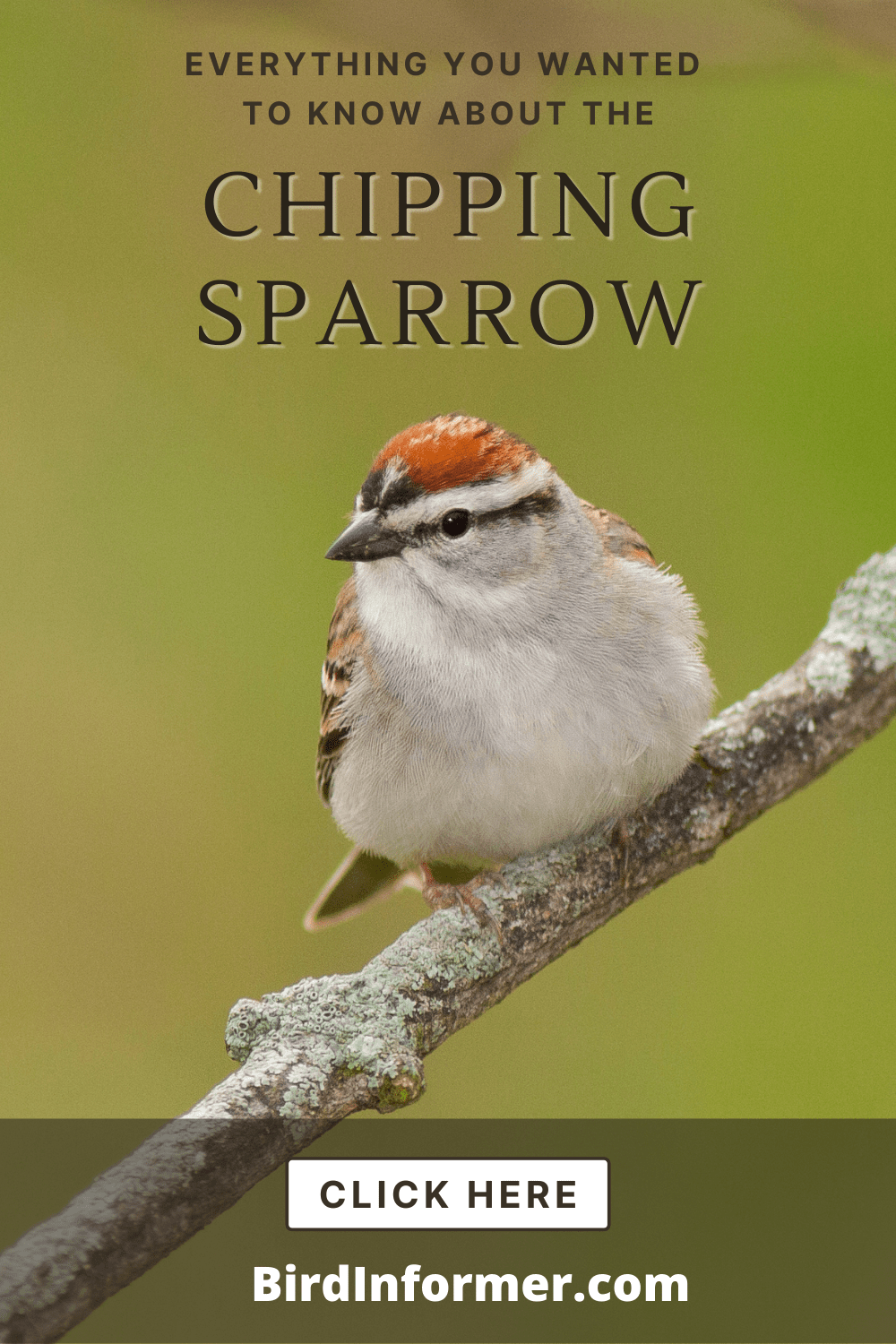Contents
- Chipping sparrow facts
- Chipping sparrow: how-to identify
- Chipping sparrow bird vocalization
- Where You’ll See A Chipping Sparrow
- Chipping sparrow diet
- Chipping sparrow nesting
- Chipping sparrow behavior
- How-to attract chipping sparrows
- Chipping sparrow threats
- Chipping sparrow fun & interesting facts
- Chipping sparrow related species in this family
The Chipping Sparrow is a neat-looking bird found throughout North America. They are known for their bright rusty crown, brown back, gray underparts, and beautiful wings with dark streaks. The birds are commonly seen in open woodlands and suburbs. On top of that, their bird calls are said to be one of the most familiar ones you’ll hear at the start of spring.
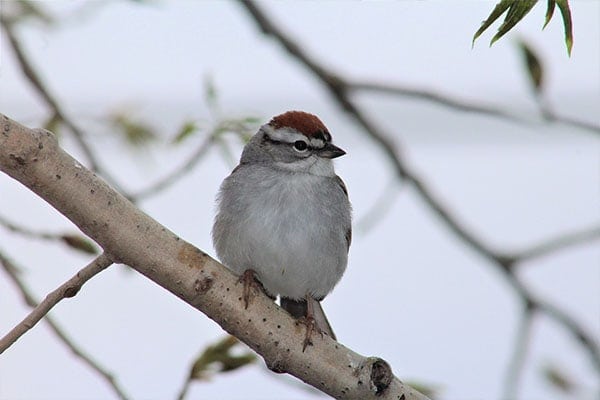
In this article, we are going to cover a wide variety of topics related to the Chipping Sparrow, such as:
- How to identify them
- How, when, and where they migrate
- Their diet
- How and where they nest
- And much more…
So, without any more delay…
Let’s jump right into it and learn more about the Chipping Sparrow.
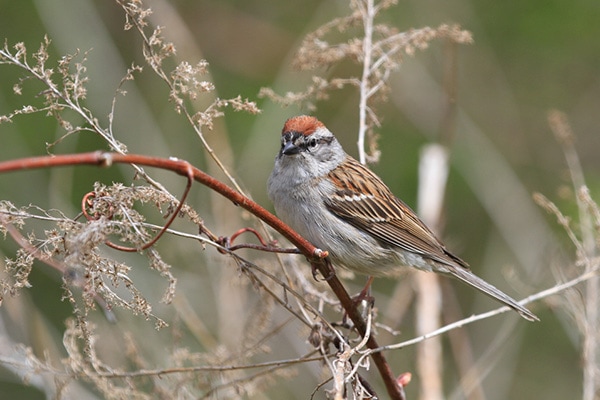
Chipping sparrow facts
- Common Name: Chipping Sparrow
- Scientific Name: Spizella passerina
- Scientific Family: Passerellidae
- Life Span: 9-8 years
- Size: 4.7 to 5.9 inches
- Wingspan: 8.3 inches
- Weight: 0.4 to 0.6 oz
- Conservation status: Least Concern (LC)
Chipping sparrow: how-to identify
These guys are slender, small-sized birds. They feature a fairly long tail and a small bill. At first look, you’ll easily observe how clean this bird looks with its reddish-brown crown, pale face, black eyeliner, grayish chest, and tan back with dark lines.
The wings of the chipping sparrow show a pattern of the brown color with white bars. The tail of these birds are also slim and have almost the same pattern as the wings.
Differences Between Male & Female
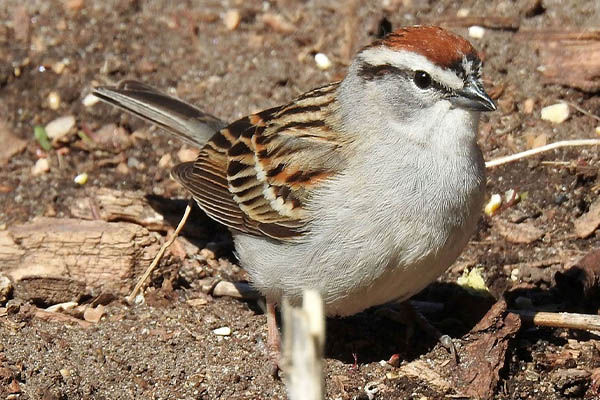
There are no noticeable differences in the appearance of adult male and female chipping sparrows. However, females do appear larger in size but duller in coloration.
Differences In Summer Plumage vs Winter Plumage
During the fall and winter, you’ll notice that Chipping Sparrows feature a different plumage around their head area. Instead of the reddish-brown crown, they now have a brown crown with dark streaks.
The then white supercilium now appears to be buff-brown, and all the bright colors seem to have subdued. The bill is pale with a dark tip, and their cheeks are brownish.
Chipping sparrow bird vocalization
Where You’ll See A Chipping Sparrow
Chipping Sparrows are known to be found all over North America, mainly in the US, Mexico, and Central America.
You’ll often find them in open areas like the edges of the woodlands and grassy forests. The birds also have well-adapted in human-made parks, gardens, nests, and even shrubby or tree-lined backyards.
These birds can be found high up, especially in mountains where they sometimes just go all the way up. Many of these birds are in places with evergreen trees, but they also stay in oak trees, pecan trees, birch trees, and eucalyptus trees.
Chipping sparrow bird migration
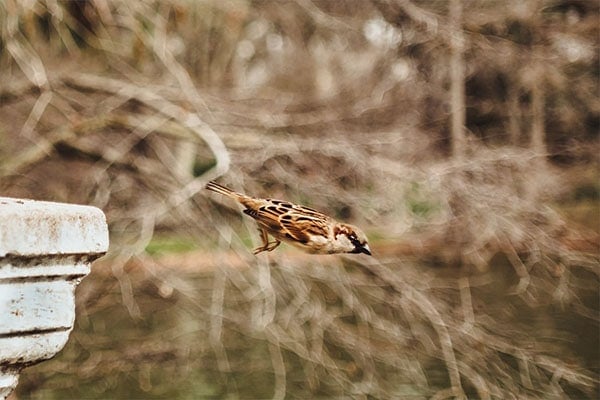
Chipping Sparrows are what we consider as a resident or short-distance migratory birds. Those in the southern part of the US and Central America mountains are already residents, while those in the northern part of North America travel south during winter.
These birds are often seen traveling in flocks around spring and fall. It’s also found that the migratory Chipping Sparrows choose to stay in California, Mexico, and Florida.
Chipping sparrow diet
A huge amount of the Chipping Sparrows’ diet consists of seeds, fruits, and other plant material like grasses and herbs. This is usually during the winter season when the most available food supply are plants.
Once the breeding season comes, summer, Chipping Sparrows supplement their diet with insects as a protein source. The birds would eat moths, butterflies, grasshoppers, crickets, and other crawling insects.
In search of food, the birds forage low on the ground to eat seeds and pick insects. They usually do this with their mates or along during the breeding season, but they feed in flocks of up to 50 birds when it’s winter.
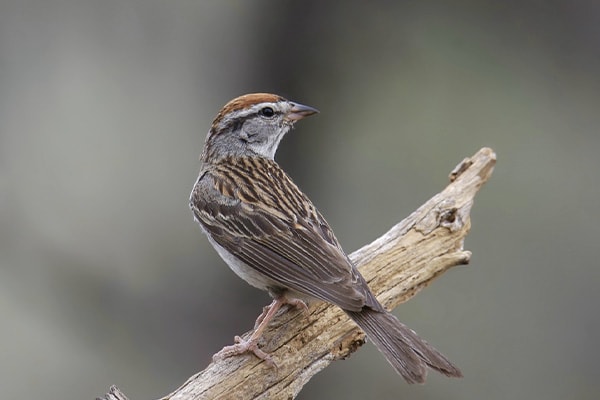
Chipping sparrow nesting
- Clutch Size: 2-7 eggs
- # of Broods: 1-3 broods
- Incubation Period: 10-15 days
- Nestling Period: 9-12 days
- Egg Description: Pale blue to white, lightly streaked or spotted with black, brown, or purplish
Chipping Sparrows are known to be mostly monogamous, although some males will prefer to have more than one mate. It’s the males that get to the breeding area first to establish territory; pairing then forms once the females arrive.
Both male and female birds choose the nest site. This is usually in evergreen trees like the conifer, but crabapples, maples, and other deciduous trees are good nesting sites, too. Nests are usually built 3-10 feet off the ground.
Like many other birds, female Chipping Sparrows are the ones that build the nest while the males guard the females. Combining grass, weeds, and rootlets, the cup-like structure is formed. It is then lined with softer materials like fine plant fibers and animal hair.
It usually takes the females 3-4 days to finish the nest, but there are times when she had to stop building the nest halfway through and change nest sites.
Chipping sparrow behavior
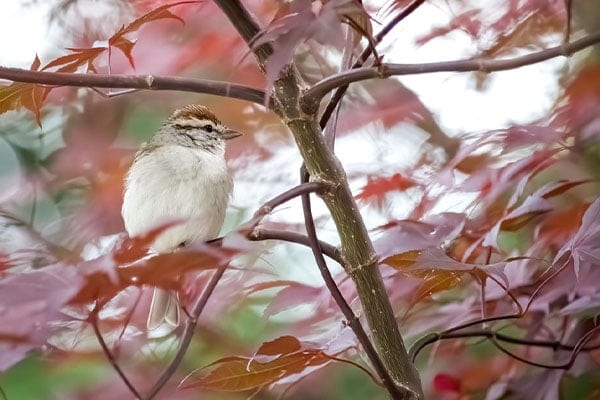
Chipping Sparrows are diurnal birds as they are most active during day time. As ground feeders, they spend a lot of time foraging for food on the ground, hopping and running, then pecking through leaf litters or brushes.
These birds are social during winter. They form flocks with dozens of Chipping Sparrows and find food together. When disturbed, they don’t scatter and find a place to hide on trees when approached but would instead fly a few spaces forward before landing again.
But as the breeding season starts, they become territorial. They defend their territories from other Chipping Sparrows while tolerating other species as long as they don’t get too close to their nests.
How-to attract chipping sparrows
If you’re in southern North America and want to attract Chipping Sparrows in your backyard, you only need to remember to provide their needs – food, water, and shelter.
As mentioned above, Chipping Sparrows eat seeds the most. So, start by setting up a bird feeder with birdseed in it. One particular seed these birds love is the black oil sunflower seed. Place the seeds on the bird feeder and scatter some on the ground, too.
If you want the birds to stay longer, you can plant some shrubs and small trees that will encourage them to build their nests. Keep shrubs close to each other so that the birds feel extra safe. Or, you can also opt to make them a birdhouse.
Finally, don’t forget to provide a birdbath for the birds’ water supply.
Chipping sparrow threats
Chipping Sparrows are common and widespread across the continent. There has been an increase in numbers as there are no more frequent changes in their habitats.
The birds’ huge decline in numbers is more likely due to changes in the forests, competition with house sparrows, and parasitism of brown-headed cowbirds. Predators like snakes, crows, blue jays, hawks, falcons, squirrels, and cats are also a threat to their species.
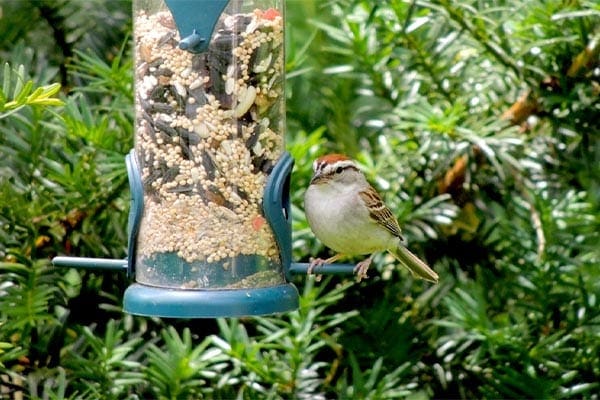
Chipping sparrow fun & interesting facts
- Chipping sparrows have two subspecies: eastern chipping sparrow and western chipping sparrow.
- They are named chipping sparrows due to the sharp “chip” sound they make.
- They consume over 2 pounds of seeds throughout the winter to survive.
- They replace the feathers on their head and throat up to six times a year.
- They have a flimsy nest wherein light can be seen through it.
- A group of Chipping Sparrows is known as “tournament”.
- Edward Forbush described the birds as “the little brown-capped pensioner of the dooryard and lawn, that comes about farmhouse doors to glean crumbs shaken from the tablecloth by thrifty housewives.”
- Oldest recorded Chipping Sparrow was ten years and 11 months old.
- Rufous-winged Sparrow
- Botteri’s Sparrow
- Cassin’s Sparrow
- Bachman’s Sparrow
- Grasshopper Sparrow
- Olive Sparrow
- Clay-colored Sparrow
- Black-chinned Sparrow
- Field Sparrow
- Brewer’s Sparrow
- Black-throated Sparrow
- Lark Sparrow
- Lark Bunting
- American Tree Sparrow
- Fox Sparrow
- Dark-eyed Junco
- Yellow-eyed Junco
- White-crowned Sparrow
- Golden-crowned Sparrow
- Harris’s Sparrow
- White-throated Sparrow
- Sagebrush Sparrow
- Bell’s Sparrow
- Vesper Sparrow
- LeConte’s Sparrow
- Seaside Sparrow
- Nelson’s Sparrow
- Saltmarsh Sparrow

